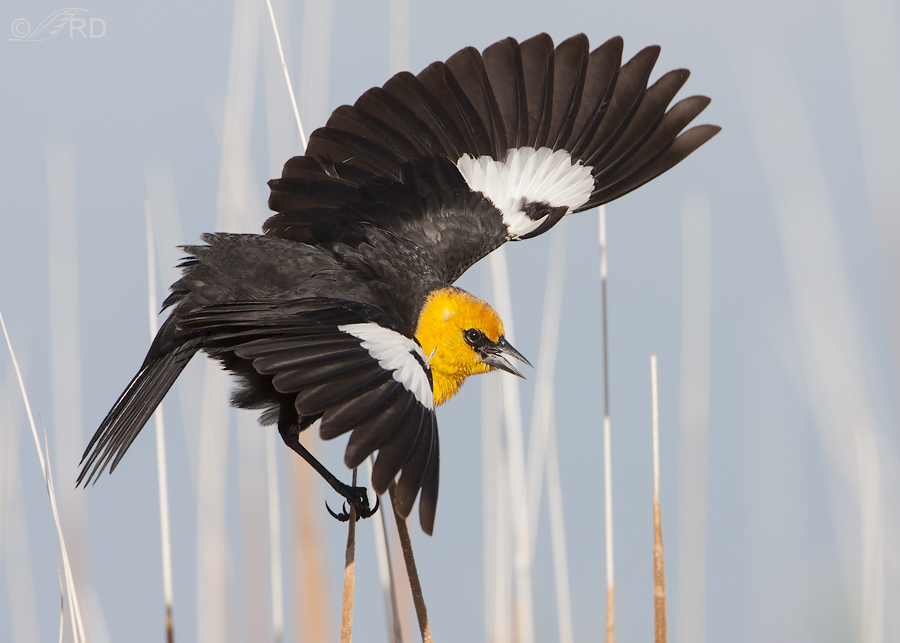
Xanthocephalus xanthocephalus
TAXONOMY
Icterus icterocephalus Bonaparte, 1826, Nance Co., Nebraska.
OTHER COMMON NAMES
French: Carouges а tкte jaune; German: Brillenstдrling; Spanish:
Tordo Cabeciamarillo, Tordo Cabecidorado.
PHYSICAL CHARACTERISTICS
9–10 in (23–25 cm); female 1.5–2 oz (42.5–56 g), male 2.6–3 oz
(72.5–85.5 g). Sexually dimorphic in color. Males black, with a
bright yellow head, throat, and breast, black between the eye
and bill and on the chin, and a large white patch on the primary
wing coverts. Females are brown above, with a golden
yellow throat and stripe above the eye, and heavy brown streaks
on their breast; in worn (summer) individuals, the yellow is
paler and somewhat brighter. Young birds resemble females,
and males in their first summer resemble summer females.
DISTRIBUTION
Breeds from eastern British Columbia and the Canadian
prairies, east locally to southern Ontario, and south through
the American west to eastern Washington and California,
south to northern New Mexico. Resident in the lower Colorado
River valley, and locally in south-central California.
Winters from central Arizona, New Mexico, and western
Texas south to central Mexico.
HABITAT
Freshwater marshes, with cattails, tules, or bullrushes. In migration
and winter, found in agricultural fields.
BEHAVIOR
Territorial during the breeding season. Males defend a territory
with songs and chasing. Males perform a “song spread display,”
in which the wings are held up in a V as they vocalize.
Both sexes perform a display in which the wings and tail are
partially spread, the head turned, and the bill pointed upward.
In winter, found in flocks, often enormous ones that contain
several different species of blackbirds as well as European starlings
(Sturnus vulgaris).
FEEDING ECOLOGY AND DIET
Forage low in vegetation in a marsh or on the ground. Their
food consists of invertebrate animals (especially insects), grain,
and other seeds.
REPRODUCTIVE BIOLOGY
Males commonly are simultaneously paired to up to six females;
females are not monogamous, and will solicit copulation
from males other than their principal mate. Females build the
nest, which is a bulky cup of woven vegetation, commonly woven
to several stalks of emergent vegetation in marshes. Three
to five eggs are laid in May–July. Incubation 12–13 days; fledging
at about 12 days. Usually single brooded, but replacement
clutches may be produced.
CONSERVATION STATUS
Not threatened. Yellow-headed blackbirds are common, and
data indicate that their numbers are stable.
SIGNIFICANCE TO HUMANS
Considered an agricultural pest in some areas. They commonly
gather in large roosts in urban areas in winter, where their
droppings may be a concern for public health.
Other popular Animals
Photo Gallery of - Yellow-headed blackbird
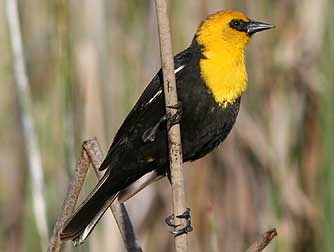
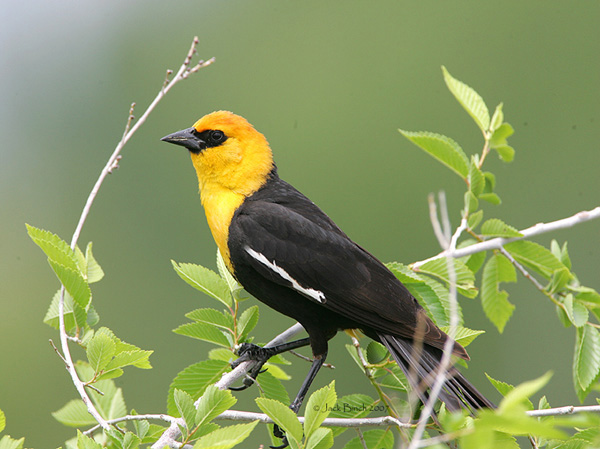
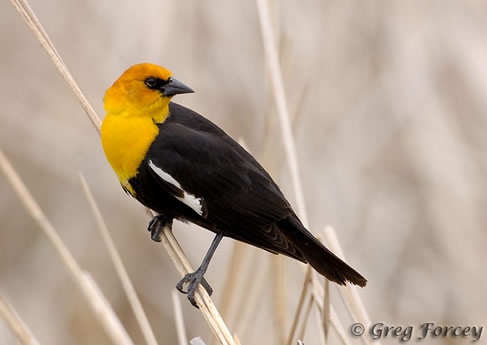
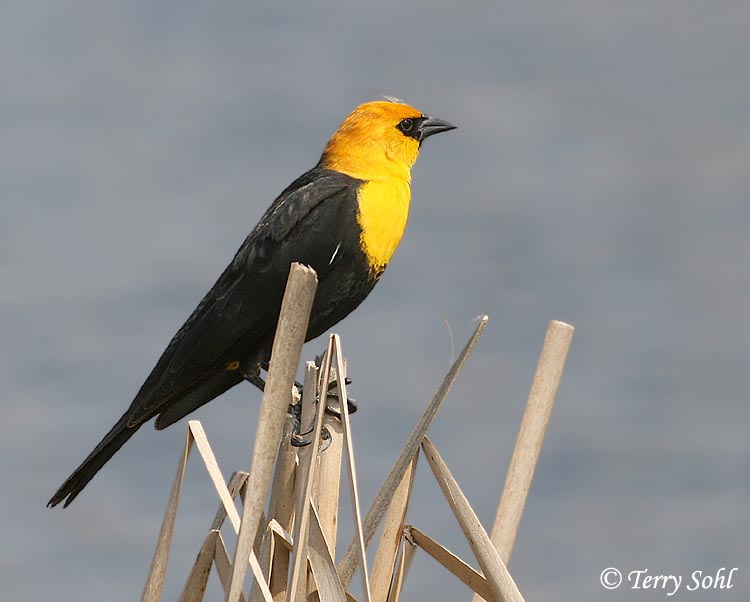
 Animalia Life
Animalia Life